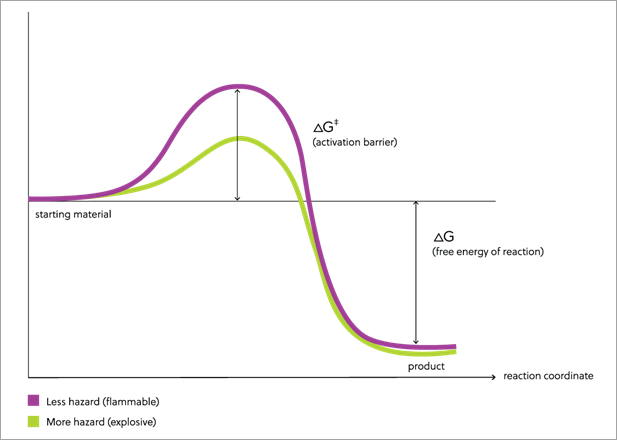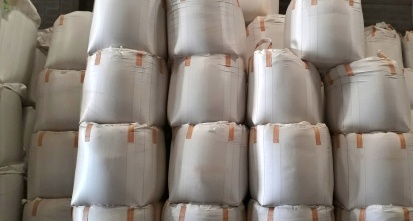Gain new perspectives for faster progress directly to your inbox.

On this anniversary of one of the largest and most devastating industrial incidents ever recorded, we remember the tragedy of Beirut – a blast so immense that it was heard 200 km away in Cyprus. The epicenter of the detonation was at a port warehouse and the fuel was 2,750 tonnes of ammonium nitrate.
Ammonium nitrate is one of the most widely used fertilizers, an important constituent of many other industrial compounds, such as mining explosives, and used as a nutrient for producing antibiotics and yeast. Like so many other chemicals used in industrial processes, it carries risk which can be mitigated through safe storage and robust handling procedures.
The investigations in Beirut are still open, but it is thought that a fire started in a warehouse at the port and spread to an area where ammonium nitrate was stored; unsafe storage near fireworks and without isolation or fire prevention measures led to its explosion. Within seconds, this incident killed over 200 people, injured over 5,000 more, and left around 300,000 residents homeless. Sadly, this event was not unique, and explosions and fires caused by chemicals, such as ammonium nitrate, are all too common. Ultimately, if a substance can release energy rapidly, then it carries a potential explosion or fire risk. But why do certain chemicals possess these characteristics?
Weak chemical bonds and stable products make an explosive partnership
If a substance has weak chemical bonds, particularly if it yields stable products, it is likely to pose a risk of fire or explosion. Fuels, such as gasoline, burn because their combustion yields stable substances with stronger chemical bonds; in the case of gasoline, these products are carbon dioxide and water. Gasoline requires either heat or an ignition source, such as a spark or flame, to burn because the bonds in the fuel reactants are not easily broken.
For example, Figure 1 shows a conceptual model for a reaction such as the burning of gasoline. The purple line shows how the free energy changes during a reaction from reactants to products. When gasoline burns, it forms stable products (water and carbon dioxide) containing strong bonds, giving off a great deal of energy in the process. This is shown in the figure by the difference in height from the starting point on the left to the end of the reaction on the right. As the difference in free energy between the reactants and the products increases, the energy that can be released when the reaction occurs also increases.
In order to get from reactants to products, however, the molecules must have enough energy to start the reaction. Reactions often begin by breaking bonds, and strong bonds require substantial amounts of energy to break. Thus, for the reaction of a stable molecule to begin, a large amount of energy must be given to the reaction. This energy is called the activation barrier, and it is shown by the height of the hill in the middle of the reaction pathway.

Once the barrier has been surmounted, the reaction can occur. Since the free energy difference between reactants and products is large, the reaction of one molecule can provide sufficient energy to help other molecules to surmount the activation barrier. The reaction can then accelerate and be difficult to stop until the reactants are consumed. Once a fire starts with gasoline, it can be difficult to extinguish. In addition, because the products are gaseous (carbon dioxide and steam), the products occupy much more space than the reactants. The expansion of volume transfers energy to the surroundings; if the reaction occurs in an enclosed space, an explosion may occur. Since it requires more energy to cause gasoline to burn, it is easier to avoid actions which provide that energy and thus easier to prevent fires.
Review examples of explosive chemicals here, and for additional chemical safety or substance resources, check out the Chemical Safety Library and CAS Common Chemistry.
Other substances provide larger hazards. Many of these contain weak chemical bonds. Figure 1 (green line) also shows a model for a reaction such as combustion of a molecule containing a weak bond. Like gasoline, the difference in free energy (as shown by the difference in height) between the reactants on the left and the products on the right is large; the products contain strong bonds, and the reaction releases a large amount of energy when it occurs. The height of the barrier for this reaction, however, is much lower than that for the combustion of gasoline.
Reactions often start with the breaking of a bond, and the presence of a weak bond provides an easy place for a reaction to begin. Once the bond is broken, the reaction can then move to completion. When the products are much lower in energy than the reactants, as in this case, the reaction of one molecule can release energy to cause other molecules to react; because the barrier to reaction is lower, more molecules can be induced to react from the reaction of one molecule of the substance in Figure 1 (green) than from the reaction of one molecule of the substance in Figure 1 (purple). The presence of the weak bond means that the reaction, once begun, can accelerate rapidly. If the products are gases, they will also transfer work to their surrounding; if the reaction is rapid enough, an explosion or detonation can occur. The lower barrier to reaction of a substance containing a weak bond means that it takes less energy to start its reaction, and so the ways in which it can be handled are more limited. In some cases, impact, friction, or sparks from handling can initiate reaction, and so handling of such substances requires much more care to prevent fire or explosion.
Azides (RN3) illustrate this point perfectly. These substances contain three connected nitrogen atoms with bonds of unequal strength. Nitrogen atoms can form strong bonds – the triple bond between the nitrogen atoms in molecular nitrogen gas (N2) is one of the strongest known chemical bonds; however, nitrogen atoms can also form single and double bonds, which are considerably weaker. One of the nitrogen-nitrogen bonds in azide is weak and doesn’t require much energy to break, driving rapid decomposition that yields N₂. Because the nitrogen-nitrogen bond in N2 is so much more stable than the nitrogen-nitrogen bonds in the reactant azide, this decomposition releases large amounts of energy.
Inorganic and organic azides have varying sensitivities. Inorganic sodium azide can be handled safely under everyday conditions but is deployed as a rapid gas generator in vehicle airbags, while highly volatile heavy metal azides, such as lead azide, are used as initiators for explosives. Organic azides are commonly used in the synthesis of more complex chemicals, including pharmaceuticals and polymers. Organic azides with either low molecular weight or high nitrogen (N) to carbon (C) atomic ratios can be explosive and there have been several reported incidents of laboratory explosions due to the formation of low molecular-weight azides from reactions between inorganic azides and dichloromethane. An azide-modified amino acid used for the preparation of modified proteins was also found to be explosive.
Peroxides (ROOR) are another class of molecules with potentially explosive characteristics. Peroxides contain weak oxygen-oxygen bonds; when these bonds break, peroxides yield radical intermediates (free radicals) that are useful in chemical reactions. Radical intermediates are particularly useful for initiating polymerization, and they are commonly detected as intermediates in combustion; even small amounts of radicals can act as catalysts and, in some cases, they catalyze their own formation. Peroxides also fragment to yield molecular oxygen (O₂); while the oxygen-oxygen single bond is weak, the oxygen-oxygen double bond in O2 is strong, so this fragmentation releases energy.
The weak oxygen-oxygen bond means that peroxides can decompose easily, releasing free radicals and O₂, a volatile, explosive combination, particularly when concentrated. Several significant fires have been reported at chemical facilities that work with peroxides, including one in Texas, USA, when Hurricane Harvey and unprecedented flooding caused safety mechanisms to fail. Peroxides can also spontaneously form from the exposure of ethers to oxygen. These peroxides form crystals that can explode when subjected to physical shock, friction, or reaction with certain metals. Ethers are normally formulated with small amounts of inhibitors such as BHT (butylated hydroxytoluene, used as a preservative) to prevent the formation of peroxides. The inhibitors are consumed by oxygen; if ethers are kept for long periods of time in the presence of oxygen, the ethers will be susceptible to peroxide formation.
The fiery urge to become stable
Other substances have bonds that, while they do not break easily on their own, may react easily under certain conditions to form products that are much more stable. As new bonds are formed, energy is released as heat, fires, or explosions can result. For example, metal alkyls are used as catalysts in the synthesis of a wide range of chemicals and materials, but they are often pyrophoric, burning easily on contact with air.
Trimethylaluminum, in particular, reacts with air or water to yield products with highly stable aluminum-oxygen bonds, resulting in fires and explosions.
Acrylates are used for industrial-scale polymerization; each acrylate monomer replaces its double bond with an additional single bond as it is incorporated into the polymer chain. This new bond is stronger than the cumulative strength of the double bond, so the polymerization reaction releases energy. The polymerization of acrylates and other alkenes is often performed using radical initiators such as peroxides to start the polymerization reactions, using the same reactivity that under other circumstances leads to their explosion. In large scale polymerization chambers, when the surface area to volume ratio is too low to dissipate the heat formed and when the inhibitors of uncontrolled polymerization are consumed, inactivated, or removed, acrylates can polymerize explosively.
Similarly, solvents such as dimethyl sulfoxide (DMSO) can react with a variety of substances, such as acids, bases, and electrophiles, to reduce decomposition temperatures; reactions even at lower, seemingly safe temperatures may still lead to an explosion.
Harnessing the great enabler of the modern world
At its center, chemistry is made possible by energy changes and for centuries, humans have harnessed and exploited this energy to travel the world, drive industry, and produce the very food on our tables, the clothes on our backs, and the fabric of our cities. We covet explosive and volatile chemicals for their energy and yet their power can have unexpected and devastating consequences. By understanding how to channel this energy in constructive ways and to better identify conditions when chemicals may react in unexpected and detrimental ways, we can anticipate explosive incidents before they happen and learn to prevent them.
For more information on ammonium nitrate, its hazards,and safety rules, download our full CAS Insights Report and watch our webinar that brings together key experts who will discuss the formulation options and the innovation landscape.



